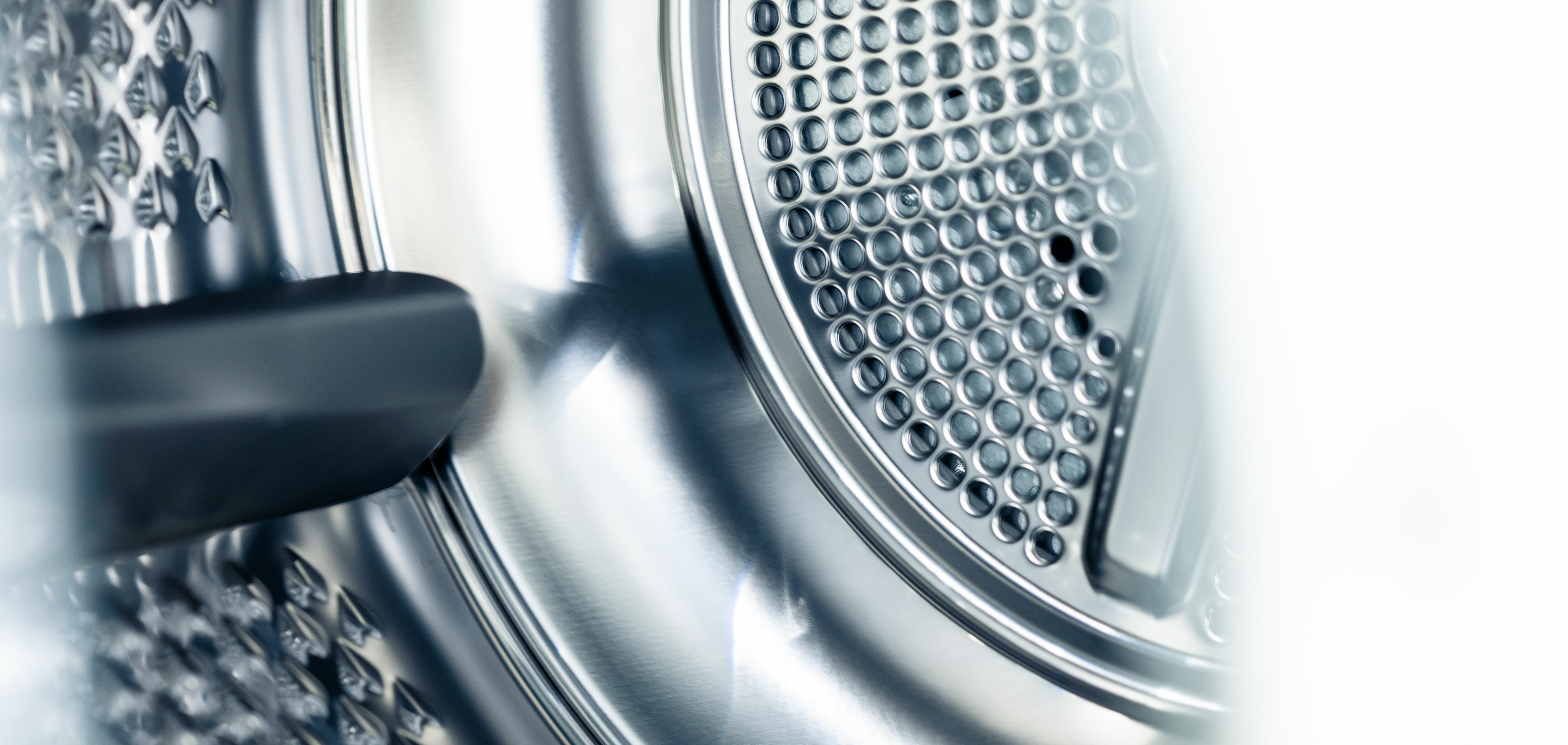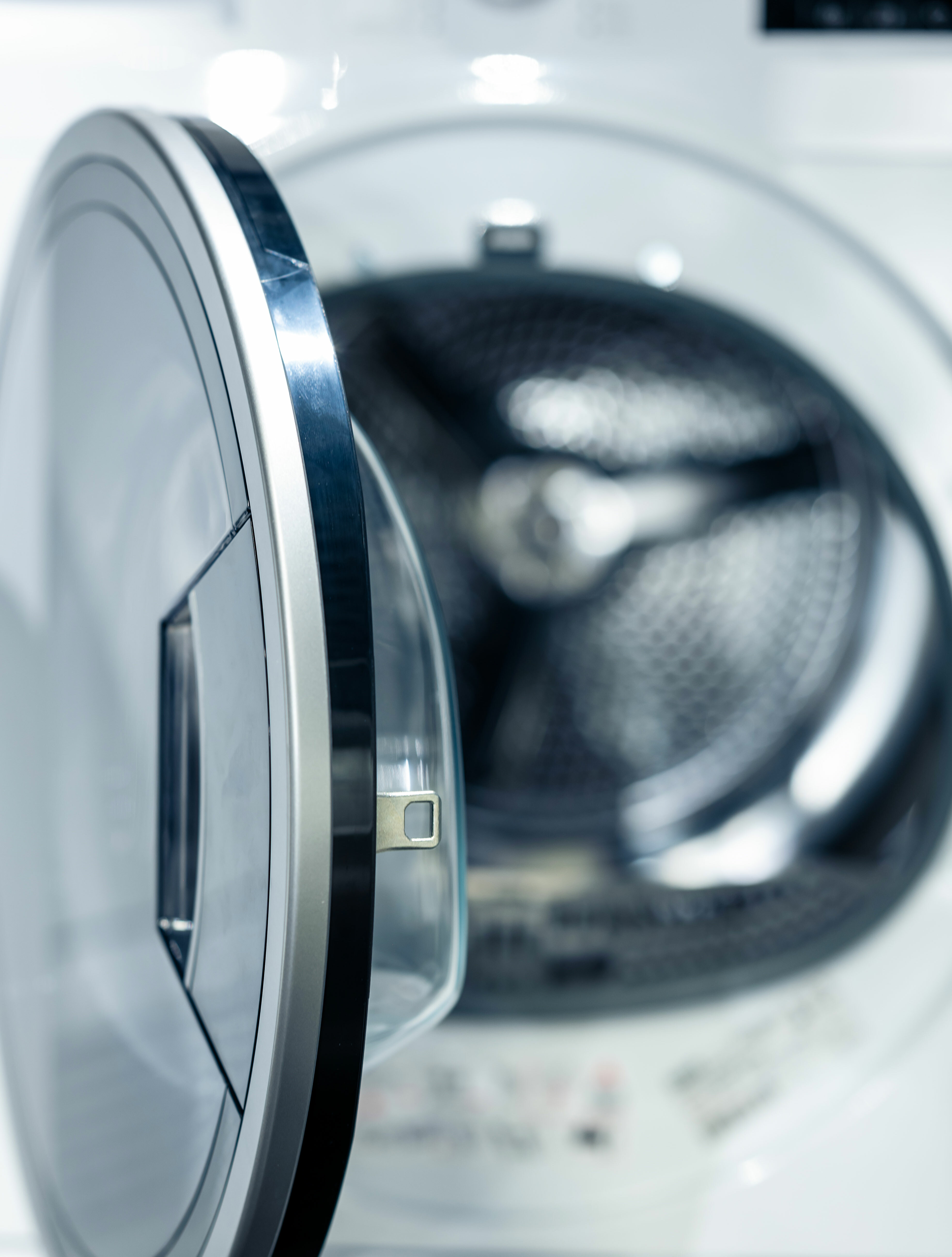The harder the water, the more limescale accumulates during washing as a result of heating. What’s more, washing detergents and softeners may leave residues. In addition, the hair and lint washed out of clothing also build up and are left behind in the machine. Combined with the remaining moisture after washing, this provides the perfect breeding ground for germs, bacteria and mould. All this dirt and residue are not completely removed and germs or bacteria are not completely eliminated when sprint programs or eco washing programs with low temperatures (20°C-40°C) are used on a frequent basis. On the one hand, this is unhygienic and, on the other, it results in unpleasant odours in the washed laundry as well as the washing machine.
In other words, irregular cleaning and inadequate maintenance of the appliance can sooner or later lead to the following problems:
- Unpleasant odours in the washing machine and the freshly cleaned laundry.
- Germs and bacteria settle in and mould forms.
- Limescale deposits decrease washing performance.
- Energy consumption is increased.
- The lifespan of the washing machine is shortened.

Five steps for a cleaned and maintained washing machine
You can prevent all of this by regularly cleaning and correctly maintaining your washing machine. We are happy to share with you our best tips and remedies, so you can enjoy cleaner, pleasantly smelling laundry for many years:
Step 1- Hot washing cycle (95°C)
Germs and bacteria not only settle into your laundry, but also the smallest grooves and hard-to-reach corners. This results in unpleasant odours and the laundry is no longer cleaned properly. Since high temperatures kill germs and bacteria, running a hot washing cycle regularly is indispensable. Start an empty washing cycle every couple of months at 95°C without any washing detergent.
Step 2 - Lint filter
The job of the lint filter is to catch any clothing fibres, lint, microplastic and other small particles. You should remove and clean the lint filter three to four times a year. Place a shallow bowl under the opening, because as soon as you open the cover, the remaining water will run out of the appliance. After removing the lint filter, clean it under running water using a brush. You can wipe off the plug-in slot with an absorbent microfibre cloth.
Note: The lint filter is typically found in the lower section of the washing machine, beneath the drum. If you cannot see it, the operating manual will provide further information.
Step 3 - Rubber seal
Besides hair and lint, water accumulates in the rubber seal on the door opening of the washing machine. Constant moisture and dirt can lead to mould and bad smells. Remove any residues in the rubber seal at regular intervals (at least once a month). If there is too much dirt or mould has already appeared, a little citric acid can help to clean these areas. Wipe the seal with a damp cloth and dry well.
Step 4 - Clean the detergent drawer
The detergent drawer of the appliance is likewise a popular place for germs, bacteria and mould. Each washing cycle leaves behind residues of washing detergent and softener, and unwanted dirt builds up. It is therefore important to keep the drawer clean and wipe away residues and dirt every one or two months. Remove the drawer and soak it in warm water (in case of stubborn dirt: you can also add the household remedy, citric acid). To clear away tough dirt in the corners, you can also use an old toothbrush. Then, rinse the drawer under running water, wipe dry with a cloth and reinsert the cleaned drawer.
Special tip: Vinegar: Vinegar is a suitable remedy for cleaning the detergent drawer. Important: Treat vinegar with care, as it can corrode hoses as well as rubber and metal parts due to its aggressive effect. For this reason, vinegar is suitable only for cleaning the detergent drawer of the washing machine. Never use vinegar for the rubber seal on the drum opening or in the drum itself, as it will corrode the materials and damage them.
Step 5 - Clean the drum
The washing machine drum can be cleaned and descaled in two ways: Either you use a special washing machine cleaner available in any supermarket. Or you can descale and clean the empty drum with one of the following household remedies. We are happy to share our tricks with you:
- Citric acid: This household remedy is a natural and sustainable washing machine cleaner and provides reliable help when descaling the machine. Put five to eight tablespoons of citric acid into the empty drum and start a washing program at 95°C. As a nice side-effect, the citric acid will leave behind a fresh fragrance when washing.
- Bicarbonate of soda: Instead of using citric acid, you can also clean your washing machine with bicarbonate of soda. Put 50 grams of bicarbonate of soda into the detergent drawer and start the washing cycle (without laundry) at 60°C or higher. Alternatively, two packets of baking powder can be used.
- Soda: Sodium carbonate is probably the best household remedy for cleaning your washing machine. It is suitable as a cleaning agent for the laundry as well as for the washing machine. With your next load, add one to two tablespoons of sodium carbonate in addition to the washing detergent. To clean your washing machine particularly thoroughly, you can also start an empty washing cycle with 50 grams of sodium carbonate at the highest temperature.
- Dishwasher tabs: To eliminate bacteria and limescale, dishwasher tabs can also help you clean your washing machine. Place a tab into the machine (without laundry) and start a program at 95°C. You can also use dishwasher tabs to clean your hob.

What else should you keep in mind for the long-term maintenance of your appliance?
- Leave the door of the appliance and detergent drawer open after washing. This allows the machine to dry on the inside. Germs, bacteria and mould prefer moist environments.
- Generally, high temperatures are not necessary for washing clothing. Indeed, this uses more energy and water. But we recommend running a washing program at 95°C from time to time. Only with high temperatures can you kill germs, bacteria and mould.
- Do not overload the washing machine, and observe the loading instructions for the appliance.
- Dose the washing detergent according to the manufacturer's instructions on the packaging. This way, you can avoid adding too much detergent and reduce the build-up of residues. You can find out the water hardness in your area on the website of your local water utility company.
- Clean the rubber seal and the door of the machine after each washing cycle with a damp, absorbent cloth. It is also a good idea to regularly check the lint filter for any residues.







